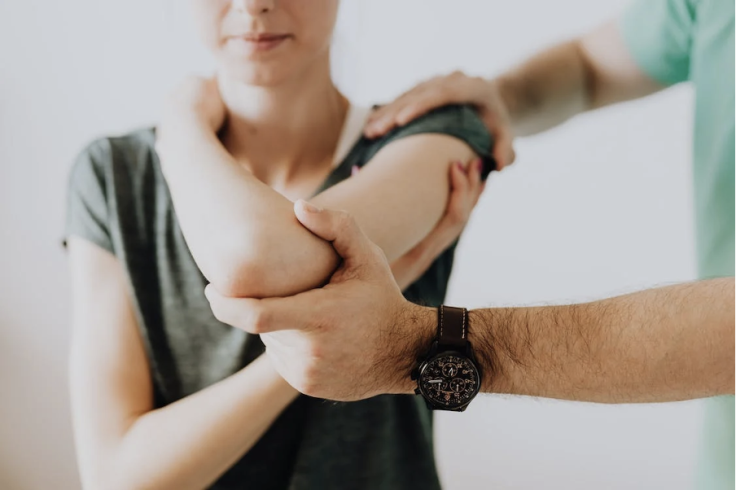A Breakthrough in Joint Health: Immunotherapy Regenerative Medicine Provides Alternative of Joint Treatment

Physical activities bring joy and fulfillment to people's lives. Whether dancing, hiking, or spending time with loved ones, these experiences make life meaningful. Unfortunately, one thing can get in the way of pursuing an active and fulfilling life – dealing with joint pains or osteoarthritis (OA). This formidable condition often limits people with their abilities and pursuit of their aspirations.
Also known as degenerative joint disease or "wear and tear" arthritis, OA is a condition that occurs most frequently in the hands, hips, and knees where the cartilage within a joint begins to break down and the underlying bone begins to change, causing movement limitations, pain, and discomfort. According to the Centers for Disease Control and Prevention, an estimated 32.5 million US adults are affected by OA.
OA patients traditionally treat their ailments with increased physical activity, muscle strengthening exercises, weight loss, over-the-counter pain relievers, and prescription drugs, or surgery for more advanced conditions. However, regenerative medicine offers an unconventional approach – an alternative treatment for OA and other rheumatic diseases. It is cementing itself as the best option for patients suffering from the condition, aiming to slow down the disorder's progression and improve their quality of life.
In Puerto Vallarta, Mexico, Immunotherapy Regenerative Medicine pioneers the study and implementation of regenerative medicine, especially in treating various conditions such as autoimmune diseases, aging conditions, and other degenerative disorders. Dr. Ernesto Romero leads this charge with his 20 years of professional experience in the field.
The advantage of regenerative medicine
Regenerative medicine is a rapidly advancing method of utilizing the body's innate ability to heal and regenerate. It involves therapeutic strategies that stimulate and enhance the body's natural healing processes, aiming to restore the function and structure of damaged tissues and organs.
In treating OA, regenerative medicine focuses on healing and restoring the affected tissue rather than merely managing the symptoms. While traditional treatments like analgesics, corticosteroids, botulinum toxin, and hyaluronic acid provide temporary relief from pain, they do not address the underlying cause of it. In contrast, regenerative medicine aims to heal damaged tissues to provide an alternative and more long-term solution to joint pain.
Aside from these, according to Dr. Romero, regenerative therapies are also minimally invasive and have fewer side effects compared to surgical interventions, offering patients faster recovery time so they can return to their normal activities sooner.
The regenerative medicine's approach to OA
Regenerative medicine employs two types of intra-articular injection therapies: Platelet-rich plasma infused with bioactive proteins (PRP-B) and Mesenchymal stem cells (MSC). According to Dr. Romero, both treatments have demonstrated promising results.
PRP-B therapy involves the injection of a patient's own platelets into the affected joint. Dr. Romero explains that injecting PRP-B growth factors from one's blood into an injured area will help tissues repair themselves by causing new cells to form. In this way, PRP-B could help reverse existing tissue damage.
In PRP-B therapy, a concentrated solution of these platelets is prepared from the patient's blood and injected into the painful joint. This therapy has shown significant efficacy in treating joint injuries and diseases, particularly those that have failed to heal over time.
On the other hand, there's also MSC therapy or therapy that utilizes mesenchymal stem cells or multipotent stromal cells that can differentiate into various cell types, including bone cells, cartilage cells, and fat cells. These cells are injected directly into the affected joint, tendon, or ligament, where they aid in repairing the damaged tissue. MSC therapy is particularly beneficial for patients with spinal injuries, offering a high success rate in alleviating persistent pain in the lumbar or cervical region.
Dr. Romero explains, "The key distinction between the two is that MSC treatment involves cells directly repairing the damaged area, whereas PRP-B treatment relies more on plasma providing factors that support regeneration in the affected area."
The Immunotherapy Regenerative Medicine advantage
Immunotherapy Regenerative Medicine administers high-level targeted PRP and MSC therapies among its patients suffering from the adverse condition of OA. The pioneer stem cell clinic in Mexico stands at the forefront as a trailblazer, offering cutting-edge joint regenerative treatments of the highest caliber.
It has also garnered a reputation for delivering top-notch therapies tailored to meet the unique needs of patients with a commitment to excellence and personalized care. Rather than adopting a one-size-fits-all approach, the team invests substantial time and effort in getting to know each patient on a profound level, championing individualized care.
"Each body has its own unique circumstances. One that fits the other sometimes is complicated to the other, so we have developed a comprehensive therapy plan tailored to the specific requirements of the individual," Dr. Romero adds.
He envisions a future where these conditions are not barriers to an active lifestyle but mere hurdles that can be treated accordingly. "With the advancements in regenerative medicine, we're not just managing symptoms anymore; we're addressing the root cause of the pain and dysfunction," Concludes Dr. Romero.
With these meticulously studied and tested regenerative-based joint treatments, there's now no way for OA and other joint-related diseases to stop people from enjoying life.





















